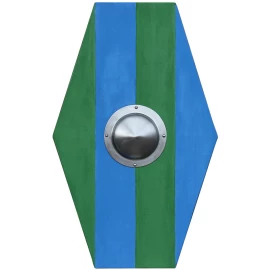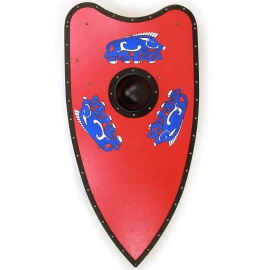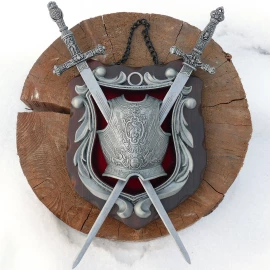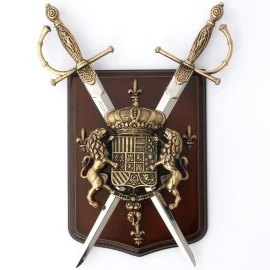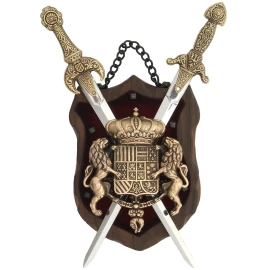Germanic hexagonal shield, 1st – 3rd cen. AD.
The myth of the savage Germanic warrior who fought undisciplined and did not control any tactical maneuvers is still in the minds of many people of our time. On closer examination of the ancient sources (Caesar and also Tacitus) one gets very quickly to another result. Germanic armies were not so well armed and trained as, for example, the Roman army, but they could just as well have some great successes against them as the historical data from the year 9 or 15 ad confirm. More information...
Germanic hexagonal shield, 1st – 3rd century AD.
The key to this was in the commander's level. Arminius e.g. had a thorough strategic and tactical training in the Roman army. That is why he knew the strengths and weaknesses of the Roman legions. The only protective weapon, the shield, consisted almost entirely of wood, leather, or similar organic material.
The shields consisted of wooden boards. However, since these have not been preserved, statements about size and shape can only be made about the remains of iron or bronze edge fittings. Moreover, Roman representations of Germanic warriors offer some clues.
The shields were strikingly small. The largest shields were about 100x50cm, but often only 60x40cm or even smaller. The variety of forms was great; from oval, barrel-shaped, hexagonal, sometimes even round or rectangular.
Specifications of the Germanic hexagonal shield
- Wood thickness approx. 20mm
- Boards of soft wood (for example alder, linden or birch)
- Covered with linen
- Hand painted
- Weight approx. 3480 g
- Height approx. 73cm
- Width approx. 45cm
Write to our specialist








